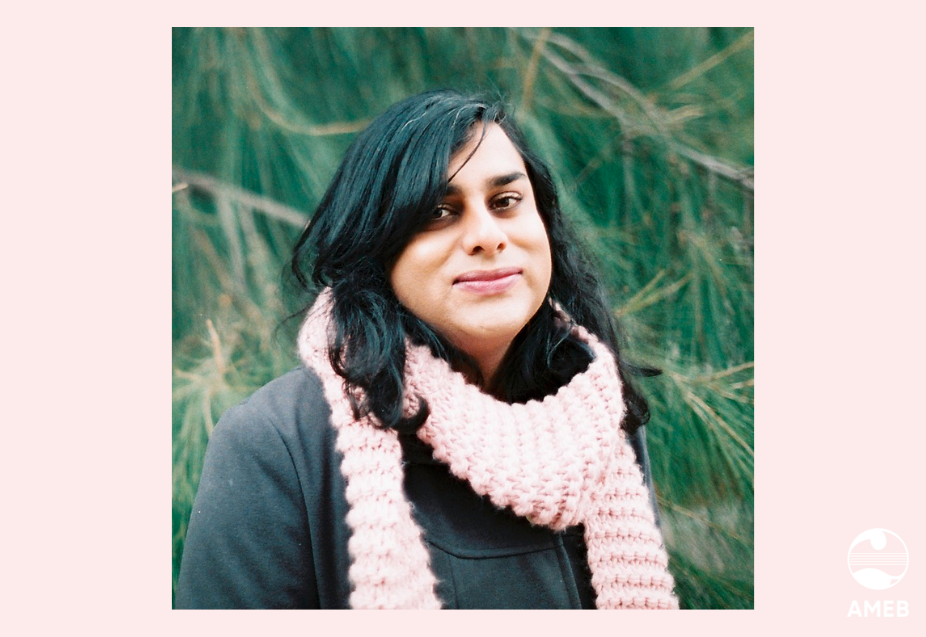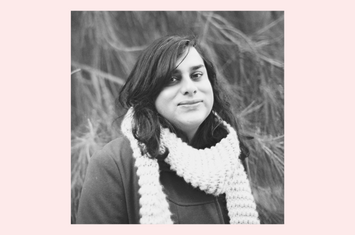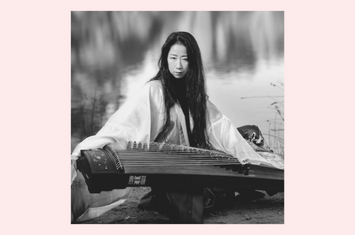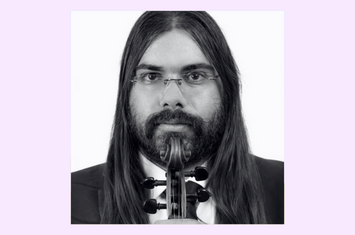
Sia Ahmad is a songwriter, artist, improviser, curator and facilitator using a DIY punk aesthetic to bring together communities, programs and collaborations. As a musician, she has performed throughout Australia, Japan, New Zealand, the UK and the Southeast Asian region. Compositionally, Ahmad's work has been commissioned by the Australian Art Orchestra, CCAS, Parramasala, You Are Here, Homophonics and more.
In 2022, she became the first transgender person of south Asian (in her case Bangladeshi) descent to win the ElectroAcoustic Work of the year at the Apra Amcos Art Music Awards for her work Depth Disintegration composed for musician Ben Anderson's double-belled bass trombone.
Key themes: DIY, punk, post-punk, community building, conversations, engagement, audience, vulnerability, sound, composition, collaboration, trombone, commissioning work
You're a self-described "late-comer" to music. Can you take me through your experience and how bringing punk philosophy into creative work has been fundamental to how you work?
My instrumental "learning" background is that I played a trombone in the primary school band. Then I learned the Indian percussions from Tabla for a few years. But that wasn't laid on me like others who learnt piano from age four. I never really learned music.
I loved listening to music and always had it around, like Kylie Minogue and Kids on the Block. As I got older, I got into U2 and Crowded House. I wanted to be a rock star, but I had no idea what that meant. I just wanted to do something.
In high school, I was always mucking around on instruments, but I didn't own instruments or anything. I first discovered more bands like Deftones and Korn, then I discovered punk rock like the Stooges, The Sex Pistols and the Clash. Later I found more hardcore stuff, like the Gazi and the whole post-punk realm. Discovering the notion of post-punk was cool because those bands took the punk formula and expanded it further—great artists like Nene Cherry, who worked with the Slits. Punk bands that interfaced with hip-hop, techno and stuff were great because it was all post-punk music in the most literal sense. After 1977, it was all about exploration and creativity. All these people were doing whatever they wanted in their pursuit of making sound and exploring their ideas. They went for it with DIY gusto.
That punk ethos imbued my practice during that time into my way of living now. Making the best of what you can with what you have at hand is the utmost, number one thing for me. The ideology of just making things happen spreads to the practice of supporting and building communities. That's why I always love collaborating.
My practice involves many ideas. So there's a lot in Sia Ahmad, a solo artist, to the Shoeb Ahmad catalogue. But it's about community, the conversations, and the spirit of going forward and seeing what happens at the other end. That's what keeps me going.
You champion the underground scene and the community in and around Ngunnawal country (Canberra). What steps are vital when seeking out a community or building a community space for creatives?
I realised early on in my twenties that there were moments when I thought, "Oh, maybe I need to move and get out." But, I eventually realised that I feel settled as a human being, which has much to do with my environment. While I'm not a First Nations person, I feel a connection to this land, to this environment, to this country. It seeped its way into my mind, the way I want to live, the way I want to be, and the way I want to feel at ease.
My practice has always been about ensuring things still happen, even when I get comfortable. Unpicking comfortability becomes a process of thinking about action, bringing people into this community, sharing what we have, and connecting with the people here. That's been a big part of my ongoing creative practice as a producer and curator. I believe Ngunnawal country (Canberra) should be on the map. So, a big part of my practice is to provide that opportunity for artists and reinforce that artists shouldn't underestimate the audience, wherever they are. People thirst for knowledge and to learn what's out there.
For example, I can write a two-day program of deep listening electronic field recording drone music, and people will come. You might never have seen them before, but that's the best part. It allows you to converse with them, in person, at the show and discover what brought them along. Even if they don't like it, at least they could see it and talk about why they didn't like it, instead of dismissing it without curiosity and investigation.
We all want to chat, and allowing people to create chances and moments to talk and share is important. Connecting people to have conversations is essential.
Your music gives the listener an insight into your inner self (such as with Quiver) and the different spaces you hold; identity, cultural heritage, religion, glam techno diva. When composing, what lessons have helped you practice expressing yourself more truthfully through your work?
DIY is still a core element of my practice; how I see an idea, how I am right now, and how I might arrange it for the band or group of people to perform. Sometimes I wish I still had that youthful naivety in playing and creating. Still, the more you play and perform, the more proficient you become, and it's like practice makes perfect after a while. Back in the day, it was writing a straight-up three-chord punk song or indie-rock song. Sometimes still do that, and it's really fun. But it has a place in the context of a body of work, as opposed to just banging a whole lot of songs out.
With Quiver, I'd worked extensively on the computer - producing programs and constructing electronic things. Because of the songs I like, the words I was looking for to convey those kinds of conversations (narratives around identity that were close to me) were quite honest, vulnerable, and pure. I wanted to do something musical unmasked from technology or audio manipulation. Like soul music, I wanted to make something that hits you sonically and emotionally in the heart.
The sound of Quiver sits with The Temptations as much as it does with PJ Harvey and the Go-Betweens; it's pretty diverse but harmonious. It all works because there's a purity there that I wanted to convey.
From writing your own music to being commissioned to write for others must come with its learning style and sophisticated evolution in your practice. What steps did you take to be confident in your writing and producing to work with others?
When working with others, creative conversations are vital to the work. From there, I can take inspiration from the people I work with, who I love to work with because (A) they're good people and (B) they’re great musicians. I can talk through my thoughts and say what notes, rhythm, riff, bassline or groove I want. I'm not a traditional composer; I'm not writing things on staves. But I like that cultural tradition of making music by listening and talking to each other. With technology, I might write things on MIDI, then record them and say, "these are the notes, listen to this, listen back, let's see the pattern here, the groove, let's then reflect on it." Then we can go into the studio and record.
The earliest solo works were me, a guitar, and a laptop. I was happy to do it all, but I also considered who I wanted to collaborate with on these ideas. Can they execute these ideas, and can I produce them, and bring them all together? To work with the Australian Art Orchestra (AAO), where the piece evolves into a sound installation, I had to break down that installation into three voice parts and rearrange it for the ensemble's instruments.
I don't go and seek out commissions; the work I make is for myself. But when the AAO came up, I thought, "I shouldn't shy away from the challenge, and, for my practice, I need to see where I can go with an idea". Extending my ambition and trying to match those new challenges expands my knowledge because, first and foremost, I'm just a music nerd at my core. I'm always listening, and I'm listening to a lot of new music. And most musicians are ambitious. Challenging myself is something that I do incrementally. And in this particular context, it's about whether you are comfortable extending your ambition to play with the arrangement of your ideas to suit new situations.
Let's talk about the Homophonic's commissioned work Depth Disintegration. It must have felt like a full-circle moment to compose for the first instrument you "learnt"— the trombone. Not only for a very specific double-belled trombone and trombone player, Benjamin Anderson, then winning the ElectroAcoustic Work of the year at the Apra Amcos Art Music Awards in 2022.
There were so many layers to this work and the award on many personal levels.
The composition commission came through the Homophonic Pride prize. As many people know, I'd forgotten I applied when I received an email telling me I was successful.
I knew from the beginning I would be composing for the double-belled bass trombone. The trombone is an instrument that I love. I love the way it sits in a lot of music, and it's a big brass sound in everything from a Stax record to being the backbone of black metal. I was nervous when I started this commission because I didn't know Ben Anderson, the world's only double-belled bass trombonist. It is this crazy Frankenstein of an object. But, surprisingly, the trombone isn't at the heart of the work. What is at the heart of Depth Disintegration is that Ben and I clicked.
My community grew by one person, which made me comfortable, and that's what I poured into this work. It expresses the connection with Ben and working with him directly on Depth Disintegration. The community ethos was equally important to me to acknowledge when winning the award, as were all the people who have always been there to back me. Ben was fundamental to the whole journey, not just as a performer but to have someone who shared a personal resonance through the moment. I can't deny it was pretty wild and pretty special.
What were some of the conversations you had with Ben that made their way into the composition of Depth Disintegration?
Depth Disintegration was personal, but there were no words. Conveying vulnerability and human depth with its many variables was big. Returning to the thoughts behind Quiver, this also surrounded the theme of unmasking.
It's a vulnerable work, using acoustic sound to have hesitancy and tentativeness. And then there's a moment of assertiveness that recedes—the Disintegration—when we've got so much going on. There are a lot of internal furies and tension pulling at each other, and then, it releases.
I've got an idea for a companion piece called Depth Perception, exploring the mask and that kind of bravado that, as humans, we show when we're trying to stay afloat in this crazy world.
What's the thing that pushes you forward as a creative person?
Sometimes it feels self-absorbed to say personal satisfaction. But I need that layer of doing it to keep going. At a point in time, I thought, “this is my career, I've got to reach an audience, I've got to do all this stuff”, and that took me away from my practice. I'm at the point now where I don't believe in the word "career" because I'm not trying to build blocks to get to a better future. Instead, when I'm making work, it needs to resonate with me.




